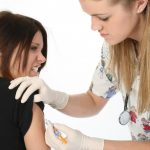
Animals will consume more antibiotics than humans in 2017, as superbug bacteria become increasing public threat
Wednesday, December 28, 2016 by Amy Goodrich
http://www.cdc.news/2016-12-28-animals-will-consume-more-antibiotics-than-humans-in-2017-as-superbug-bacteria-continues-to-become-a-public-threat.html

As our last defenses begin to fail, many more people might die from common bacterial infections in 2017. Each year, an estimated 700,000 people die due to untreatable drug-resistant infections, and today that number is increasing faster than anyone predicted.
About 40 years ago Levy and colleagues published their landmark study showing a direct link between antibiotic use on farms and antibiotic resistance issues in humans. In the years following the study, numerous other scientific studies have been published providing additional evidence of the spread of antibiotic-resistant microbes from livestock animals to humans. Nonetheless, not much has been done during all those years to stop the growing threat.
“We are about to reach the point where more antibiotics will be consumed by farm animals worldwide than by humans,” said Mark Woolhouse, from the University of Edinburgh, United Kingdom.
Researchers calculated that about 63,000 tons of antibiotics are fed to chickens, pigs, and cattle each year. Furthermore, they predicted that this number will rise by 67 percent, or 106,000 tons, by 2030.
Humanity’s greatest global threat is upon us
During the first UN General Assembly meeting on drug-resistant bacteria earlier this year, the entire assembly called antibiotic resistance the greatest and most urgent global threat. However, it is what they will do next that matters since they haven’t called for specific measures yet.
Very little change in current antibiotic practices is needed to lead to significant human health effects. Most antibiotics are used on healthy animals to promote growth or prevent disease in crowded or unsanitary conditions. This can easily be remedied by banning or reducing the amount of preventive antibiotics and finding other ways to keep animals healthy.
For decades, the livestock industry has argued that while antibiotic use may have something to do with antibiotic resistance in farm animals, this has little, if anything, to do with the human antibiotic resistance issues.
This, however, is highly debatable as nearly 80 percent of the antibiotics sold in the United States are also used in meat and poultry production. And since they are mainly using antibiotics as a prevention measure, the bacteria in and around the animals are regularly exposed to the drug, which gives rise to drug-resistant superbugs.
Colistin, which is now more used in animals than in people, is one of those examples. It is one of the last resort antibiotics used to treat some human infections. Due to antibiotic overuse, colistin resistance has now spread throughout the world, turning rather harmless infections into life-threatening diseases.
From farm to table
The easiest way for superbugs to leave the farm and infect people is via uncooked meat and poultry. In 2014, Consumer Reports found that 97 percent of the chicken breasts they tested harbored sick-making bacteria. And about half of the samples were contaminated with at least one bacterium that was resistant to three or more commonly prescribed antibiotics.
In their defense, the poultry industry said that contaminated chicken is not a concern because people know that they should cook poultry thoroughly. While this may be true, packages can leak into the fridge contaminating other foods or cutting boards may turn into breeding grounds.
Additionally, superbugs can also spread beyond the farm through workers or farm runoffs. Once these bacteria make it to the surrounding environment, they can exchange their genetic material and give their resistance to other bacteria that have never been in contact with antibiotics.
Sources
NAM.eduPDF
Tagged Under: Tags: antibiotic resistance, antibiotic-resistant bacteria, Antibiotics, livestock, Public Health, superbugs




